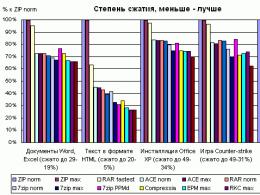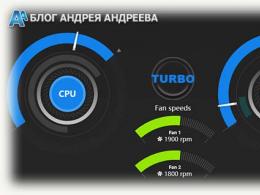Useful wiring diagrams. Amateur radio circuits
Schemes of homemade measuring instruments
The circuit of the device, developed on the basis of a classic multivibrator, but instead of load resistors, transistors with the opposite main conductivity are included in the collector circuits of the multivibrator.
It's good if your lab has an oscilloscope. Well, if it is not there and it is not possible to buy it for one reason or another, do not worry. In most cases, it can be successfully replaced by a logic probe, which allows you to control the logical levels of signals at the inputs and outputs of digital integrated circuits, determine the presence of pulses in the controlled circuit and reflect the information received in visual (light-color or digital) or audio (tonal signals of various frequencies). ) forms. When setting up and repairing structures based on digital integrated circuits, it is far from always so necessary to know the characteristics of the pulses or the exact values of the voltage levels. Therefore, logic probes make it easy to set up, even if you have an oscilloscope.
A huge selection of different pulse generator circuits is presented. Some of them form a single pulse at the output, the duration of which does not depend on the duration of the triggering (input) pulse. Such generators are used for a wide variety of purposes: imitation input signals digital devices, when checking the performance of digital integrated circuits, the need to apply a certain number of pulses to some device with visual control of processes, etc. Others generate sawtooth and rectangular pulses of various frequencies, duty cycles and amplitudes
The repair of various components and devices of low-frequency radio-electronic equipment and technology can be greatly simplified if you use a function generator as an assistant, which makes it possible to investigate the amplitude-frequency characteristics of any low-frequency device, transients and nonlinear characteristics of any analog devices, and also has the ability to generate rectangular pulses. form and simplify the process of setting up digital circuits.
When setting up digital devices, one more device is definitely needed - a pulse generator. An industrial generator is a rather expensive device and is rarely on sale, but its analogue, although not so accurate and stable, can be assembled from available radio elements at home
However, the creation of a sound generator that produces a sinusoidal signal is not an easy and rather painstaking task, especially in terms of adjustment. The fact is that any generator contains at least two elements: an amplifier and a frequency-dependent circuit that determines the frequency of oscillations. It is usually connected between the output and input of the amplifier, creating a positive feedback(POS). In the case of an RF generator, everything is simple - a single-transistor amplifier and an oscillatory circuit that determines the frequency are enough. For the audio frequency range, it is difficult to wind the coil, and its quality factor turns out to be low. Therefore, in the audio frequency range, RC elements are used - resistors and capacitors. They filter the fundamental harmonic of the oscillations rather poorly, and therefore the sinusoidal signal turns out to be distorted, for example, limited in peaks. To eliminate distortion, amplitude stabilization circuits are used to maintain a low level of the generated signal when distortion is still invisible. It is the creation of a good stabilizing circuit that does not distort the sinusoidal signal that causes the main difficulties.
Often, having assembled the structure, the radio amateur sees that the device is not working. Humans don't have sense organs to see. electricity, electromagnetic field or processes occurring in electronic circuits. Radio measuring instruments help to do this - the eyes and ears of a radio amateur.
Therefore, some means of testing and checking telephones and loudspeakers, amplifiers is needed. audio frequency, various sound recording and reproducing devices. Such a tool is amateur radio circuits for audio frequency signal generators, or, more simply, a sound generator. Traditionally, it produces a continuous sinusoidal signal, the frequency and amplitude of which can be changed. This allows you to check all ULF stages, find faults, determine the gain, take amplitude-frequency characteristics (AFC) and much more.
A simple amateur radio home-made prefix is considered that turns your multimeter into a universal device for checking zener diodes and dinistors. PCB drawings available
Every day it becomes more and more, there are many new articles, it is rather difficult for new visitors to immediately orient themselves and revise everything already written and previously posted at once.
I really want to draw the attention of all visitors to individual articles that were posted on the site earlier. In order not to have to look for a long time necessary information I will make several "entry pages" with links to the most interesting and useful articles on selected topics.
We will name the first such page "Useful electronic homemade". Here we consider simple electronic circuits, which are available for implementation to people of any level of training. The schemes are built using a modern electronic database.
All information in the articles is presented in a very accessible form and in the amount necessary for practical work. Naturally, to implement such circuits, you need to understand at least the basics of electronics.
So, a selection of the most interesting articles on the site on the subject "Useful electronic homemade products". The author of the articles is Boris Aladyshkin.
The modern element base of electronics greatly simplifies circuitry. Even an ordinary twilight switch can now be assembled from just three parts.
The article describes a simple and reliable electric pump control circuit. Despite the extreme simplicity of the circuit, the device can operate in two modes: water lifting and drainage.
The article presents several schemes of apparatus for spot welding.
With the help of the described design, it is possible to determine whether a mechanism located in another room or building is working or not. The information about the work is the vibration of the mechanism itself.
A story about what a safety transformer is, why it is needed and how you can make it yourself.
Description simple device, disconnecting the load in the event that the mains voltage goes beyond the permissible limits.
The article discusses a simple thermostat circuit using an adjustable zener diode TL431.
Article on how to make a device soft start lamps using the KR1182PM1 chip.
Sometimes, with low voltage in the network or soldering massive parts, it becomes simply impossible to use a soldering iron. This is where a step-up power regulator for a soldering iron can come to the rescue.
An article about what can replace the mechanical thermostat of an oil heating radiator.
Description of a simple and reliable thermostat circuit for a heating system.
The article describes the converter circuit made on a modern element base, containing a minimum number of parts and allowing you to get significant power in the load.
Article about various ways connecting the load to the control unit on microcircuits using relays and thyristors.
Description of a simple scheme for controlling LED garlands.
The design of a simple timer that allows you to turn on and off the load at specified intervals. Working time and pause time are independent of each other.
Description of the scheme and principle of operation of a simple emergency lamp based on an energy-saving lamp.
A detailed story about the popular "laser-ironing" technology for manufacturing printed circuit boards, its features and nuances.
One of the common hobbies of amateurs and professionals in the field of electronics is the design and manufacture of various homemade products for the home. Electronic homemade products do not require large material and financial costs and can be performed at home, since work with electronics is, for the most part, “clean”. The only exception is the manufacture of various body parts and other mechanical components.
Useful electronic homemade products can be used in all areas of life, from the kitchen to the garage, where many are engaged in improving and repairing car electronic devices.
DIY in the kitchen
Homemade kitchen electronics can be an addition to existing accessories and accessories. Industrial and home-made electric barbecue grills are very popular among residents of apartments.

Another common example of do-it-yourself home-made kitchen products by a home electrician is timers and automatic switching on of lighting above work surfaces, electric ignition of gas burners.
Important! Changing the design of some household appliances, especially gas appliances, can cause "misunderstanding and rejection" of regulatory organizations. In addition, it requires great care and attention.
Electronics in the car
Home-made devices for a car are most widely used among owners of domestic brands of transport, which differ in a minimum number additional features. The following schemes are in great demand:
- Sound signaling devices of turns and inclusion of a manual brake;
- Battery and alternator operating modes indicator.

More experienced radio amateurs are engaged in equipping their car with parking sensors, electronic window lifters, automatic light sensors to control low beam headlights.
Homemade for beginners
Most beginner radio amateurs are engaged in the manufacture of structures that do not require high qualifications. Simple proven designs can serve long time and not only for the sake of benefit, but also as a reminder of the technical "growing up" from a novice radio amateur to a professional.
For inexperienced amateurs, many manufacturers produce ready-made construction kits that contain printed circuit board and a set of elements. Such kits allow you to develop such skills:
- Reading circuit and wiring diagrams;
- Correct soldering;
- Adjustment and adjustment according to the finished method.
Electronic watches are very common among the sets. various options performance and degree of difficulty.

As a field of application of knowledge and experience, radio amateurs can design electronic toys using simpler circuits or reworking industrial designs to their wishes and capabilities.
Interesting ideas for crafts can be seen in the examples of making radio-electronic crafts from worn out parts of computer technology.
home workshop
For independent design of radio electronic devices, a certain minimum of tools, fixtures and measuring instruments is required:
- soldering iron;
- Side cutters;
- Tweezers;
- Screwdriver Set;
- pliers;
- Multifunction tester (avometer).
On a note. When planning to do electronics with your own hands, you should not immediately take on complex designs and purchase an expensive tool.
Most radio amateurs started their journey with the use of the simplest soldering iron 220V 25-40W, and from the measuring instruments in the home laboratory, the most massive Soviet tester Ts-20 was used. All this is enough for practicing with electricity, acquiring the necessary skills and experience.

It makes no sense for a novice radio amateur to buy an expensive soldering station if there is no necessary experience with a conventional soldering iron. Moreover, the possibility of using the station will not appear soon, but only after the lapse of sometimes quite a long time.
There is also no need for professional measuring equipment. The only serious device that even a novice amateur may need is an oscilloscope. For those already versed in electronics, the oscilloscope is one of the most sought-after measurement tools.

Inexpensive Chinese-made digital instruments can be successfully used as an avometer. With rich functionality, they have high precision measurements, ease of use and, importantly, have a built-in module for measuring transistor parameters.
Speaking about the home workshop at homemade, one cannot fail to mention the materials used for soldering. It's solder and flux. The most common solder is the POS-60 alloy, which has a low melting point and provides high soldering reliability. Most of the solders used for soldering various devices are analogues of the mentioned alloy and can be successfully replaced with it.
Ordinary rosin is used as a flux for soldering, but for ease of use it is better to use its solution in ethyl alcohol. Rosin-based fluxes do not require removal from installation after operation, since they are chemically neutral under most operating conditions, and a thin film of rosin formed after evaporation of the solvent (alcohol) exhibits good protective properties.
Important! When soldering electronic components, under no circumstances should active fluxes be used. This is especially true of soldering acid (zinc chloride solution), since even under normal conditions such a flux has a destructive effect on thin copper printed conductors.
For tinning highly oxidized leads, it is better to use an active acid-free flux LTI-120, which does not require rinsing.
It is very convenient to work using solder, which includes flux. The solder is made in the form of a thin tube, inside of which there is rosin.

Prototyping boards made of double-sided foil fiberglass, which are produced in a wide range, are well suited for mounting elements.

Security measures
Doing electricity is associated with a risk to health and even life, especially if do-it-yourself electronics are designed with mains power. Homemade electrical devices should not use transformerless power from a household network alternating current. As a last resort, such devices should be configured by connecting them to the network via isolating transformer with a transformation ratio equal to one. The voltage at its output will correspond to the mains voltage, but at the same time, reliable galvanic isolation will be provided.
Electronic homemade products, for today, are accessible way manufacturing useful mechanisms that can make life easier and diversify leisure. Modern craftsmen are able to assemble both simple toys and complex, multi-tasking mechanisms with their own hands. How to make electronic toys, interesting and useful electronic homemade products for home and car with your own hands - read below!
Do-it-yourself simple electronics: making a spinner
Electrical engineering, today, is widely used for both practical and recreational purposes. Some inventions (such as, for example, the “ smart House”) will be quite difficult for a beginner to do. They require experience and in-depth knowledge of physics. Other designs are simple and affordable for beginner radio amateurs. So, for example, you can make interesting toys with your own hands - spinners, sales of which have increased incredibly this year.
To assemble a toy, you will need to stock up:
- Wooden blank measuring 9x4x1.2 cm;
- Bearing size 2.2x0.8x0.7 cm (with rubber seal);
- Two RGB LEDs;
- Two batteries and CR2032 holders;
- Stainless steel bolt 0.8x2 cm;
- Cap nuts M8.
After that, you can get to work. First of all, it will be necessary to find a design scheme on the Internet, and transfer it to a raw bar - a blank. To correctly outline the technological holes (there will be three of them), you will need a ruler.

Then follows:
- In the middle of the workpiece, drill a through hole with a diameter of 2.2 cm for the bearing;
- Drill two holes on the sides of the workpiece with a diameter of 2.5 cm and a depth of 7.5 mm;
- Using a drill, make two holes in the middle of two blind holes with a diameter of 6 mm for the LEDs;
- Treat holes with a countersink;
- Give the toy a rounded shape with a jigsaw, band saw or jigsaw;
- Sand the workpiece with sandpaper, and varnish it;
- Solder the LEDs to the battery holders;
- Check the LEDs, and install them in the mounting holes, fixing them with super glue;
- Clean the bearing and treat its insides with WD 40;
- Cut off the head of the bolt, and fix the axle in the bearing on both sides with nuts;
- Install the bearing in the mounting hole.
Spinner is ready! The toy will be interesting not only for children. Adults can also use such an electronic device: the device, rotating, will help to relax or be distracted.
Simple schemes of electronic homemade products: we make an electric call
You can easily and quickly make an electric call with your own hands.
Such a call will last a long time, and will please the ear. After all, when pressed, it will be able to create signals of various frequencies and tonality.
So, an electric call can be single-tone and multi-tone.
The ability of a call to reproduce sound in one or more keys will be affected by the presence of a multivibrator with two bipolar transistors in the radio design circuit. Let us consider in detail the scheme of an electronic call with a complex sound signal.
Yes, electronic homemade scheme will consist of the following radio components:
- Step-down transformer of the TA series;
- call button;
- Five alloy silicon diodes;
- Electrolytic capacitor with a capacity of 1000 microfarads
- Two electrolytic capacitors with a capacity of 10 microfarads;
- Two tuning resistors with a resistance of 470 kilo-ohms;
- Two MLT resistors with a resistance of 10 kilo-ohms;
- Two MLT resistors with a resistance of 33 kilo-ohms;
- MLT resistor per 1 kilo ohm;
- MLT resistor for 470 kilo-ohms;
- Three silicon plenary transistors type 630D
- Silicon-planar transistor type 630G.
The principle of operation of the device is simple. Pressing the button will turn on the third 630D type transistor, allowing current to pass to the fourth 630D type transistor. This will create the primary signal. When the second transistor of the 630D type is opened, the third and fourth transistors will lock up, creating a signal of a different tone.
DIY homemade for a car
Auto electronics, today, is in great demand. At the same time, home-made automation often has simple circuits, easy execution and installation. What electric homemade products can you do yourself for your car?
So, with your own hands for a car you can do:
- Dynamic turn signals using KIT DIY;
- Universal Charger from old electronics;
- Water pump air conditioner;
- Heated wipers and more.
The easiest way would be to design a backlight for the seat belt buckles. To do this, it will be necessary to dismantle and disassemble the locks with a flat screwdriver. After that, with the help of hot glue in the locks, it is necessary to fix the LEDs.
Each LED can be turned on through its own current-limiting resistor: this will extend the life of the semiconductor light emitting device.
After that, you should assemble the locks, and stretch the wires that power the LEDs under the seats to the ignition or the size button through the cigarette lighter. At the request of the owner, the car interior lighting can be supplemented with lamps that signal that the seat belt is not fastened.
Unusual electronic homemade products: do-it-yourself binary clock
You can make a cool binary clock for your home with your own hands. To do this, you need the Arduino platform. Wiring diagrams on this platform are simple and convenient, they are used for the manufacture of most electronic homemade products.

In addition, to make a binary clock you will need:
- Real time clock module on DS1302 chip;
- Diffuse LEDs with a diameter of 1 cm (20 pieces);
- Resistors with a resistance of 10 ohms (20 pieces);
- Resistors with a resistance of 10 kilo-ohms (2 pieces);
- Two tact buttons;
- Frame.
The watch case should consist of two halves, which can be made of wood, plastic, metal. It depends on what style your watch will be. Before making the case, you will need to assemble the LED matrix.
In this case, each LED must be connected through its own current-limiting resistor.
After that, the outputs from the LEDs must be connected to the platform. The controller itself will need to be connected to the real time clock module. After that, the contacts from the Arduino and the module must be routed to the clock buttons to set the time through resistors with a nominal value of 10 kilo-ohms. They will serve as payloads. Finally, connect the power cable to the circuit.
Useful do-it-yourself homemade products: how household scales are made
Today, almost every home has a floor or kitchen scale. In order to independently make this useful measuring device, you need to understand its device and the principle of operation.
So, to external constituent parts weights include:
- Weight processor;
- Frame;
- Screen for readings;
- platform;
- Legs.
The principle of operation of scales is extremely simple. The load, falling on the platform, presses on it due to gravity, activating the strain gauge weight sensor inside the device. The strain gauge, in turn, affects the strain gauge, changing its resistance. The latter transmits a signal to an analog-to-digital converter. After that, the ADC converts the signal into digital and sends it to the microcontroller, which draws conclusions about the weight of the load on the platform, and displays the values on the screen.
When assembling the circuit, it is necessary to pay attention to the type of strain gauge.
So, for the central location under the platform of floor, trade and technical scales it is better to choose a single point sensor. For installation on a bend, a block sensor is used. At the same time, it is necessary to ensure that the load cell has a reliable connection to the ADC. A weight processor will help solve the problem of connecting devices.
Do-it-yourself radio circuits for the home: we make an electronic lock
Electricity can also serve to protect the house. So, today, do-it-yourself sites offer simple radio circuits for electronic locks for the front door. Opening such a lock using a physical key will not work.
The simplest circuit for making a lock is usually based on a four-digit Johnson counter.
This scheme can be implemented in several variations. The simplest one is using the 4017 chip. The principle of operation of the circuit is quite simple: when you enter the correct four-digit code, a logical unit is activated at the input of the microcircuit, which opens the lock.
Consider the operation of the device in more detail:
- When the wrong keys are pressed, the circuit is restarted without triggering the mechanism through the RESET input.
- The correct signal, when a key is pressed, should go to field-effect transistor VT1, which, after opening, supplies voltage to the output corresponding to the key;
- After the complete introduction of the correct code, from the output corresponding to the last correct key, the signal is applied to the transistor VT2 connected to the relay;
- The transistor is activated for a time that determines the capacitance of the capacitor;
- The relay opens the actuator (for example, a latch).
In order to open such a lock, you need to go through about ten thousand different codes. In this case, the numbers on the code should not be repeated. That is, code 3355 will not be possible, all digital values must be different.
Most of the electronic homemade products that modern craftsmen make are designed to perform ordinary household tasks faster and better than authentic devices. So, for example, an electric spinning wheel will significantly speed up the process of creating yarn. You can quickly make an electric spinning wheel by putting the electric motor on an authentic device.
At the same time, the motor for the electric spinning wheel must have a power of at least 15 watts.
As an engine, it will be possible to use a motor from a fan, an auto-cleaner, a player. Use the foot pedal to start the engine. It will be possible to change the movements of the motor by including a TP-type toggle switch in the circuit, which provides the connection of the capacitor and resistance to different windings.
An electric fly swatter will be useful, easy to assemble and operate.
In order to implement such a mechanism, it will be necessary to assemble a standard blocking generator. At the same time, you will need to remember to isolate the handle of the fly swatter.
Where to find amateur radio circuits and homemade products
Modern sites of radio amateurs offer to make not only useful, but also unusual radio homemade products. So, for example, on the Mozgochina website you can find interesting electronic circuits for making refrigerator reminders, thermometers that change color depending on temperature, etc.
Interesting and useful will be electrical things for everyday life and crafts from improvised materials for fishing from the site “Visiting Samodelkin”.
You can read about how to design, debug and manufacture electronic mechanisms at home in the book “Entertaining Radio Electronics”. New items among radio homemade products are often posted by the site “Ham Radio Workshop”. Amusing and useful technical materials contain new issues of the Radio Amateurs magazine.
DIY homemade products at home (video)
Radioamateur clubs are, today, popular with both schoolchildren and adults. Master classes and radio circuits presented on various sites allow you to assemble almost any electrical appliance at home. The main thing is to find the right circuits, follow the instructions clearly, and adhere to safety precautions when working with electricity. And you can collect whatever you want!
Those who are engaged in radio electronics at home are usually very inquisitive. Amateur radio circuits and homemade products will help you find a new direction in creativity. Perhaps someone will find an original solution to a particular problem. Some homemade products use ready-made devices, connecting them in various ways. For others, you need to completely create the circuit yourself and make the necessary adjustments.
One of the most simple homemade. More suitable for those who are just starting to tinker. If you have an old but working cell phone push-button telephone with the player's power button, you can make it, for example, door bell to your room. Benefits of this call:

First you need to make sure that the selected phone is capable of producing a sufficiently loud melody, after which it must be completely disassembled. Basically, the parts are fastened with screws or brackets, which are carefully bent. When disassembling, you will need to remember what goes for what, so that later you can reassemble everything.
The player's power button is soldered on the board, and two short wires are soldered instead. These wires are then glued to the board so as not to tear off the solder. The phone is going. It remains to connect the phone to the call button through a two-wire wire.
Homemade for cars
Modern cars are equipped with everything you need. However, there are times when it is simply necessary homemade devices. For example, something broke, given to a friend, and the like. Then the ability to create electronics with your own hands at home will be very useful.
The first thing you can intervene in without fear of damaging the car is the battery. If at the right time charging for the battery was not at hand, you can quickly assemble it yourself. This will require:

The transformer from the tube TV is ideal. Therefore, those who are fond of homemade electronics never throw away electrical appliances in the hope that they will someday be needed. Unfortunately, two types of transformers were used: with one and with two coils. To charge the battery at 6 volts, anyone will go, and for 12 volts, only with two.
The wrapping paper of such a transformer shows the winding leads, the voltage for each winding, and the operating current. For powering filaments electronic tubes a voltage of 6.3 V with a large current is used. The transformer can be redone by removing unnecessary secondary windings, or left as is. In this case, the primary and secondary windings are connected in series. Each primary is designed for a voltage of 127 V, therefore, by combining them, they get 220 V. The secondary ones are connected in series to get 12.6 V at the output.
Diodes must be capable of withstanding at least 10 A. Each diode requires a heat sink of at least 25 square centimeters. They are connected to a diode bridge. Any electrical insulating plate is suitable for fastening. A 0.5 A fuse is included in the primary circuit, and 10 A in the secondary circuit. The device does not tolerate short circuit, therefore, when connecting the battery, do not confuse the polarity.
Simple heaters
In the cold season, it may be necessary to warm up the engine. If the car is parked where there is electricity, this problem can be solved with a heat gun. For its manufacture you will need:
- asbestos pipe;
- nichrome wire;
- fan;
- switch.

The diameter of the asbestos pipe is selected according to the size of the fan to be used. The performance of the heater will depend on its power. Pipe length is everyone's preference. You can assemble a heating element and a fan in it, you can only have a heater. When choosing the latter option, you will have to think about how to let the air flow to the heating element. This can be done, for example, by placing all components in a sealed enclosure.
Nichrome wire is also selected by the fan. The more powerful the latter, the larger diameter nichrome can be used. The wire is twisted into a spiral and placed inside the pipe. Bolts are used for fastening, which are inserted into pre-drilled holes in the pipe. The length of the spiral and their number are chosen empirically. It is desirable that the coil does not heat up red-hot when the fan is running.
The choice of fan will determine how much voltage you need to apply to the heater. When using a 220 V electric fan, you will not need to use an additional power source.
 The entire heater is connected to the network through a cord with a plug, but it must have its own switch. It can be either just a toggle switch or an automatic one. The second option is more preferable, it allows you to protect common network. To do this, the tripping current of the machine must be less than the tripping current of the room machine. A switch is also needed to quickly turn off the heater in case of malfunctions, for example, if the fan does not work. Such a heater has its drawbacks:
The entire heater is connected to the network through a cord with a plug, but it must have its own switch. It can be either just a toggle switch or an automatic one. The second option is more preferable, it allows you to protect common network. To do this, the tripping current of the machine must be less than the tripping current of the room machine. A switch is also needed to quickly turn off the heater in case of malfunctions, for example, if the fan does not work. Such a heater has its drawbacks:
- harm to the body from asbestos pipes;
- noise from a running fan;
- the smell of dust falling on a heated coil;
- fire hazard.
Some problems can be solved by applying another homemade product. Instead of an asbestos pipe, you can use a coffee can. So that the spiral does not close on the jar, it is attached to a textolite frame, which is fixed with glue. A cooler is used as a fan. To feed it, you will need to collect another electronic device- a small rectifier.
Homemade products bring to the one who deals with them not only satisfaction, but also benefit. With their help, you can save electricity, for example, by turning off electrical appliances that you forgot to turn off. For this purpose, you can use a time relay.
The easiest way to create a timing element is to use the charge or discharge time of a capacitor through a resistor. Such a chain is included in the base of the transistor. The diagram will require the following details:
- high capacity electrolytic capacitor;
- transistor pnp type;
- electromagnetic relay;
- diode;
- variable resistor;
- fixed resistors;
- DC source.

First you need to determine what current will be switched through the relay. If the load is very powerful, you will need a magnetic starter to connect it. The starter coil can be connected via a relay. It is important that the relay contacts can operate freely without sticking. According to the selected relay, a transistor is selected, it is determined with what current and voltage it can work. You can focus on KT973A.
The base of the transistor is connected through a limiting resistor to a capacitor, which, in turn, is connected through a bipolar switch. The free contact of the switch is connected through a resistor to the minus power supply. This is necessary to discharge the capacitor. The resistor acts as a current limiter.
The capacitor itself is connected to the positive bus of the power supply through a variable resistor with a large resistance. By selecting the capacitance of the capacitor and the resistance of the resistor, you can change the delay time interval. The relay coil is shunted by a diode that turns on in the opposite direction. This circuit uses KD 105 B. It closes the circuit when the relay is de-energized, protecting the transistor from breakdown.
 The scheme works as follows. AT original state the base of the transistor is disconnected from the capacitor, and the transistor is closed. When the switch is turned on, the base is connected to the discharged capacitor, the transistor opens and supplies voltage to the relay. The relay operates, closes its contacts and supplies voltage to the load.
The scheme works as follows. AT original state the base of the transistor is disconnected from the capacitor, and the transistor is closed. When the switch is turned on, the base is connected to the discharged capacitor, the transistor opens and supplies voltage to the relay. The relay operates, closes its contacts and supplies voltage to the load.
The capacitor begins to charge through a resistor connected to the positive terminal of the power supply. As the capacitor charges, the base voltage begins to rise. At a certain voltage value, the transistor closes, de-energizing the relay. The relay disconnects the load. To make the circuit work again, you need to discharge the capacitor, for this the switch is switched.






